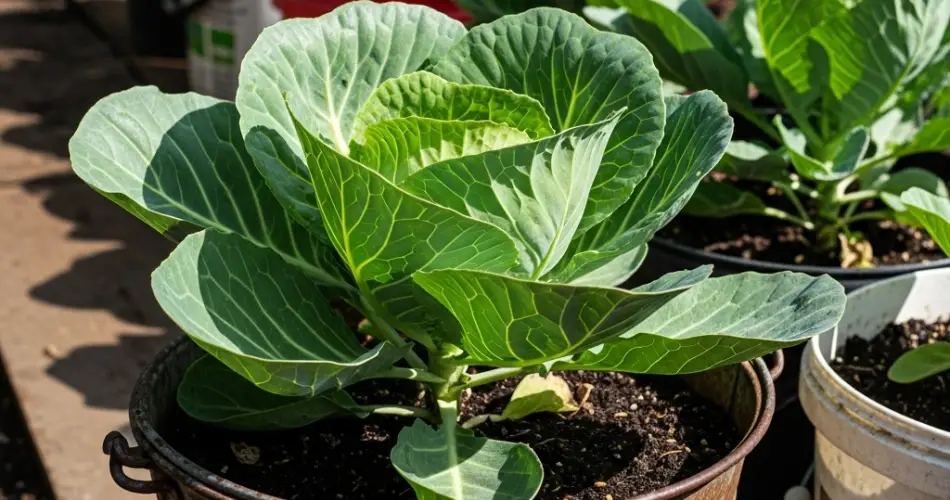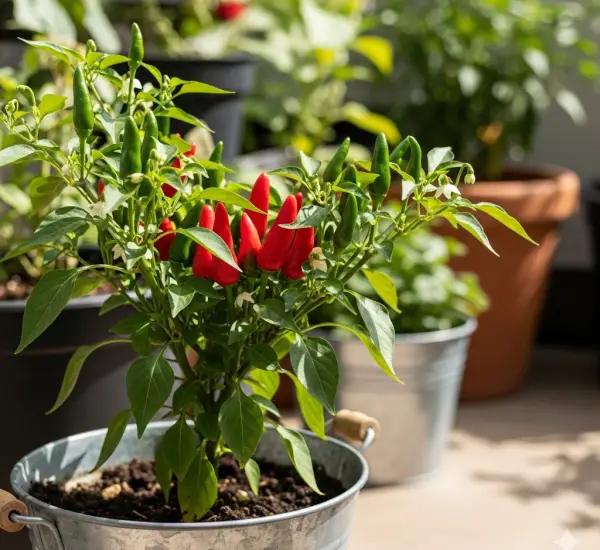Cabbage is a nutritious and versatile vegetable, rich in vitamins C and K, fiber, and antioxidants. From fresh salads to hearty stews and stir-fries, cabbage is a staple in many cuisines worldwide. While traditional gardening often requires ample space, cabbage can be successfully grown in containers, making it an excellent choice for urban gardeners, balcony enthusiasts, or anyone with limited outdoor space. With proper care and attention, container-grown cabbage can provide a continuous supply of healthy, homegrown greens.
Why Grow Cabbage in Containers?
Container gardening is a practical solution for growing cabbage at home for several reasons:
-
Space-saving: Cabbage requires only moderate container space, making it ideal for small patios, balconies, or rooftops.
-
Soil control: Containers allow you to provide the nutrient-rich, well-draining soil that cabbage prefers, free from weeds or pests.
-
Mobility: Buckets and pots can be moved to optimize sunlight or protect plants from extreme weather conditions.
-
Reduced pest exposure: Elevated containers help minimize the risk of soil-borne pests and diseases.
For beginners and experienced gardeners alike, container-grown cabbage offers a reliable and rewarding way to enjoy fresh, nutritious vegetables year-round.
Choosing the Right Container
Cabbage develops a compact head with deep roots, so the container must be spacious. A bucket or pot at least 12 inches deep and 12–14 inches wide is ideal for a single cabbage plant. Larger containers can accommodate multiple plants while maintaining enough space for root development.
Ensure your container has sufficient drainage holes to prevent waterlogging, which can cause root rot and stunted growth. Plastic, wooden, or fabric pots all work well, provided they allow excess water to escape freely.
Selecting Cabbage Varieties
Cabbage comes in several varieties, and selecting the right one is important for container gardening:
-
Green cabbage: Fast-growing and widely used in salads, slaws, and cooking.
-
Red cabbage: Offers a vibrant color and slightly peppery taste, ideal for pickling and fresh dishes.
-
Savoy cabbage: Characterized by crinkled leaves and a milder flavor, perfect for wraps or sautéing.
For container gardening, compact or dwarf varieties are preferable, as they form smaller heads suitable for limited space.
Soil Preparation
Cabbage thrives in fertile, well-draining soil. A suitable container soil mix includes:
-
1 part garden soil or high-quality potting mix
-
1 part compost or well-rotted manure for nutrients
-
1 part perlite or coarse sand for drainage
Cabbage prefers slightly acidic to neutral soil, with a pH between 6.0 and 7.0. Mixing in compost provides essential nutrients and encourages strong root and leaf development.
Planting Cabbage in Containers
Cabbage can be started from seeds or seedlings:
-
Fill your container with prepared soil, leaving 2 inches from the top.
-
Sow seeds ¼ inch deep or transplant seedlings carefully, ensuring the root ball is fully covered.
-
Space plants appropriately: one cabbage per 12–14 inch container or two per larger pot.
-
Water gently to settle the soil around the roots.
For a continuous supply, stagger planting every 2–3 weeks, allowing new plants to mature as earlier crops are harvested.
Watering and Fertilization
Cabbage requires consistent moisture to develop firm, tender heads. Water whenever the top inch of soil feels dry, ensuring the soil remains evenly moist but not waterlogged.
Fertilize container-grown cabbage every 2–3 weeks with a balanced, slow-release fertilizer or liquid feed. Nitrogen promotes leafy growth, but too much can delay head formation. Organic options such as compost tea or fish emulsion work well.
Sunlight Requirements
Cabbage grows best in full sun, needing at least 6 hours of direct sunlight each day. In warmer climates, some afternoon shade can prevent heat stress and bolting. Position containers in the sunniest available spot to promote strong, healthy growth.
Pests and Disease Management
Container-grown cabbage is generally less prone to pests than garden-grown crops, but it can still attract:
-
Aphids: Small insects that cluster on leaves.
-
Cabbage worms and loopers: Caterpillars that feed on leaves.
-
Fungal infections: Such as powdery mildew in humid conditions.
Regular inspection, manual removal of pests, and organic treatments like neem oil or insecticidal soap help maintain plant health. Good airflow and proper watering practices reduce disease risk.
Harvesting Cabbage
Cabbage heads are ready to harvest when they feel firm and reach the desired size, typically 70–100 days after planting depending on the variety. Cut the head at the base using a sharp knife. Outer leaves can be removed gradually as they mature, leaving the inner head intact.
Storing Your Harvest
Freshly harvested cabbage can be stored in the refrigerator for up to two weeks. For longer preservation, cabbage can be pickled, fermented into sauerkraut, or blanched and frozen.
Conclusion
Container gardening makes it possible to grow nutritious, homegrown cabbage even in limited spaces. With the right container, fertile soil, consistent watering, and sufficient sunlight, you can enjoy firm, flavorful heads throughout the growing season. By selecting compact varieties and staggering planting, urban gardeners can maintain a steady supply of cabbage, enhancing both their diet and their living space with fresh, homegrown produce.



